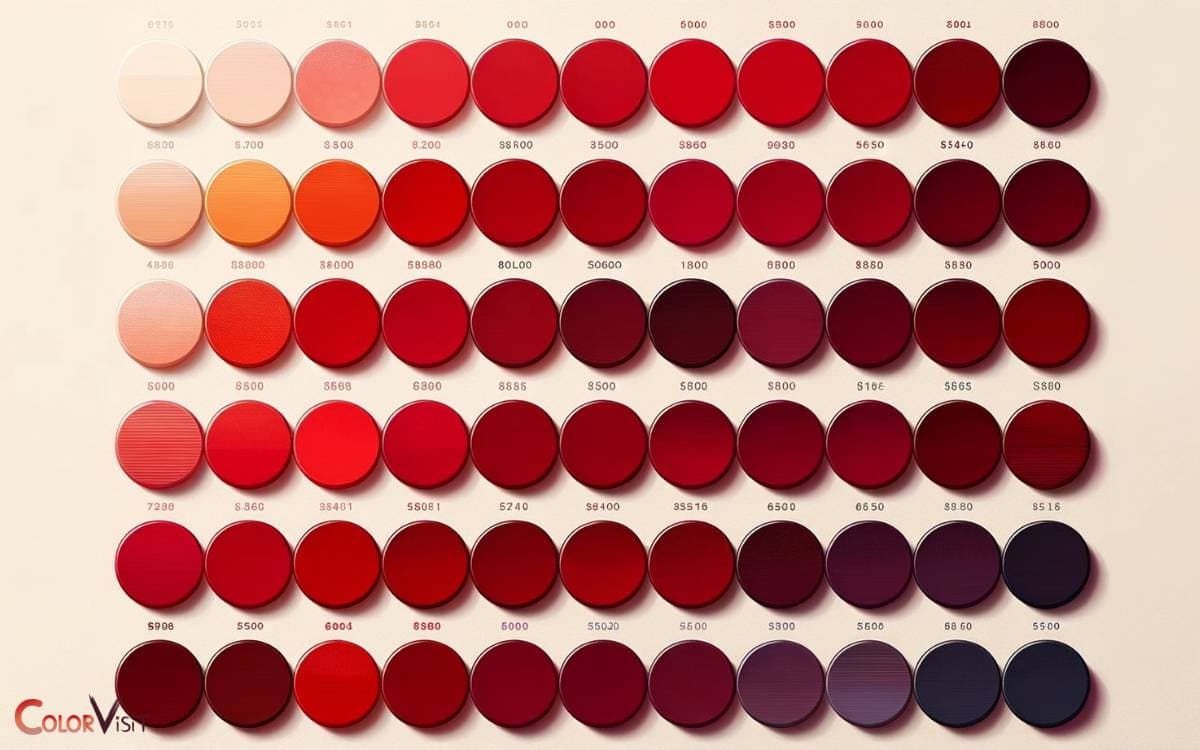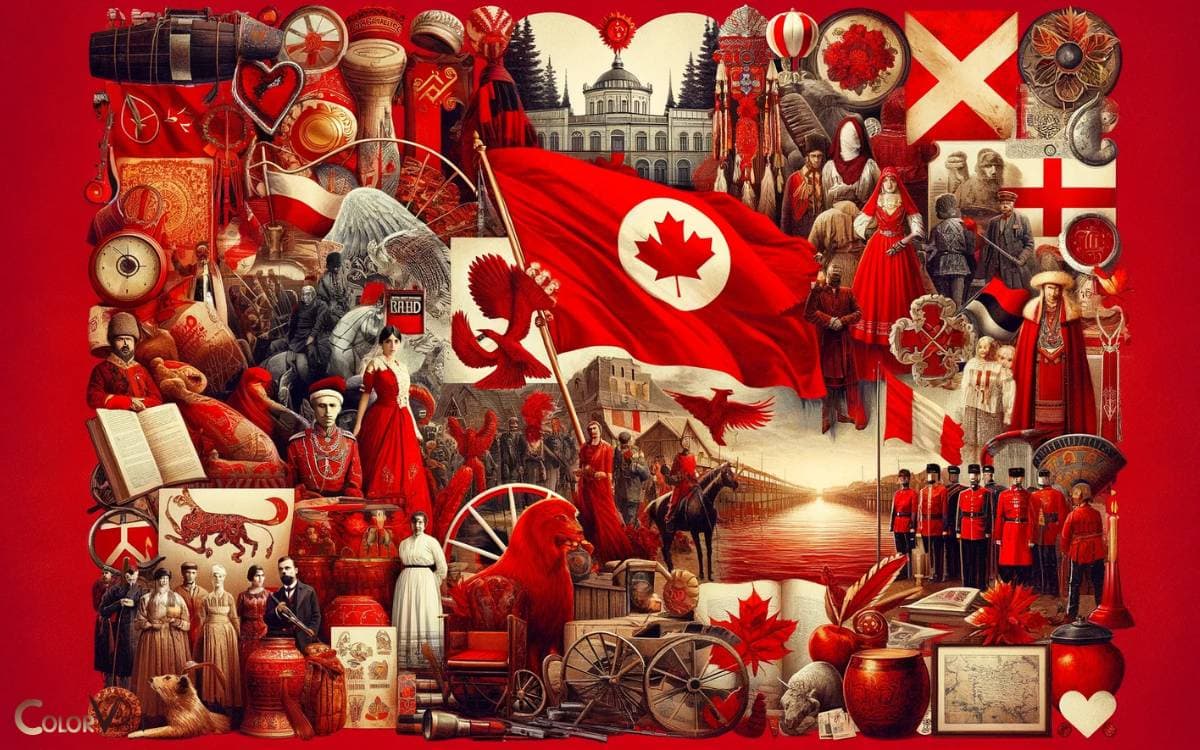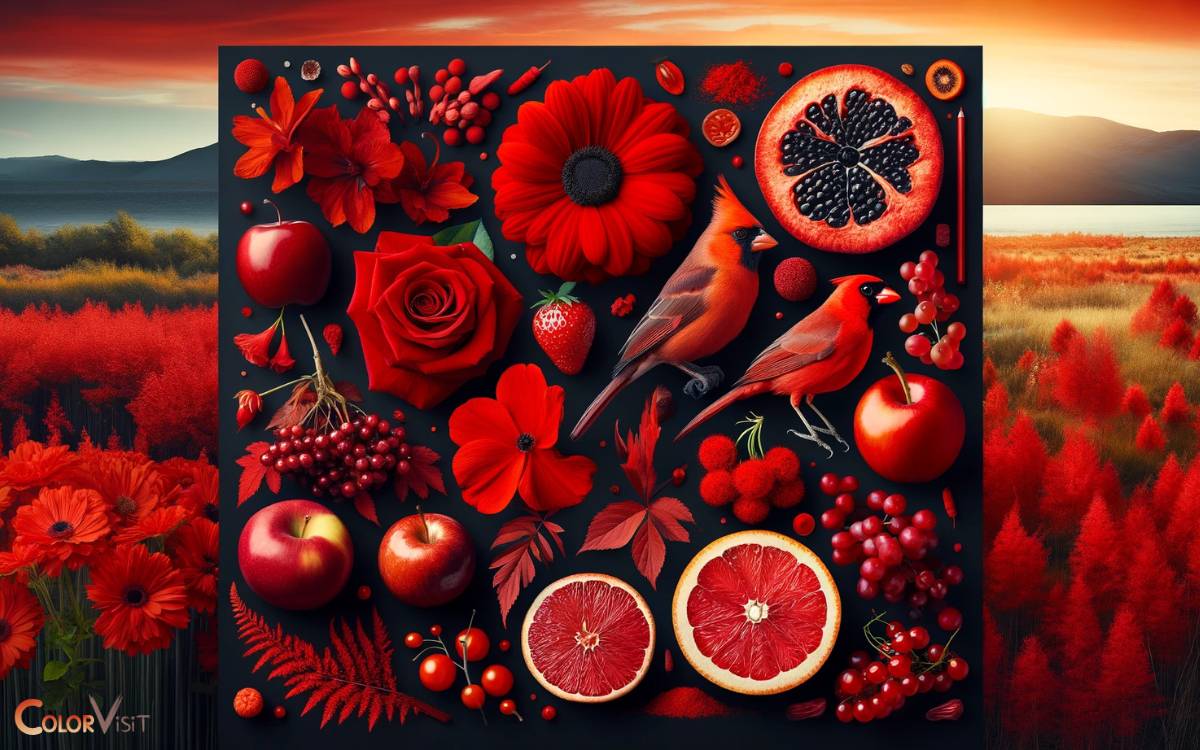How to Describe the Color Red? A Complete Guide!
Describing the color red involves understanding its multiple shades and variations, its emotional and cultural significances, and its role in nature, art, and communication.
Red is a complex color that carries different meanings and signals in various contexts.
For instance, it can symbolize love, danger, power, or passion. In nature, red often signifies ripe fruits or caution, while in art and design, it can draw attention and stir emotions.
To describe red effectively:
In terms of describing red, one must consider its multifaceted nature, taking into account its shades, emotional resonance, and cultural symbolism.
Key Takeaway
The Symbolism of Red
The symbolism of red’s associations with passion, power, and danger has been widely recognized across cultures and throughout history.
- In fashion, the color red is often used to convey boldness, confidence, and sensuality.
- Red garments are commonly worn to make a powerful statement and evoke strong emotions.
- The psychological effects of red are intriguing; it can increase heart rate and create a sense of urgency, making it an attention-grabbing color. Moreover, red can also stimulate appetite and encourage action.
- Its symbolism in fashion extends beyond clothing, influencing accessories, makeup, and even branding.
Understanding the psychological impact of red allows for innovative and strategic use of the color in various industries, harnessing its power to captivate and provoke desired responses from individuals.
Shades and Variations of Red
Amidst the myriad of shades and variations of red, from crimson to scarlet, each hue evokes distinct emotions and carries unique cultural associations.
- Differentiating hues of red can be crucial in understanding their various impacts.
- The variations in tones, from deep burgundy to vibrant cherry, play a significant role in red color psychology.
- For instance, darker reds tend to convey a sense of power and elegance, while brighter reds exude energy and passion.
- Furthermore, cultural connotations associated with red can differ widely. In some cultures, red symbolizes luck and prosperity, while in others, it may signify danger or revolution.
- Understanding the nuances of these variations is essential in effectively leveraging the emotional impact of red in diverse contexts.
Emotional Impact of Red
Exploring the emotional impact of red reveals its profound influence on human perception and behavior.
When delving into this topic, it becomes evident that the color red evokes a range of psychological effects and physiological reactions.
Its symbolic associations and cultural meanings further contribute to its powerful influence.
The emotional impact of red can be characterized by:
- Eliciting feelings of passion and intensity
- Increasing heart rate and raising blood pressure
- Symbolizing love, anger, and courage
- Stimulating appetite and portraying danger
- Signifying luck, prosperity, and happiness in various cultures
Understanding the profound emotional impact of red provides insights into its significance in art, design, and human interaction. This paves the way for an exploration of its cultural and historical significance.
Cultural and Historical Significance
The color red holds immense cultural and historical significance. It is particularly notable for its symbolism in art, its role in various rituals, and its use in historical red dyes.
- In art, the color red has been used to represent passion and love. It has also been a symbol of danger and power. Throughout different cultures and time periods, red has played a pivotal role in artistic expression.
- Similarly, red has been an integral part of various rituals and ceremonies. It signifies different meanings and emotions in different societies.
- Whether it is used to represent purity, vitality, or spirituality, red holds a significant place in religious and cultural practices.
- Furthermore, the historical significance of red dyes and pigments sheds light on the practical and symbolic importance of this color throughout human history.
Red dyes were highly sought after and used for a variety of purposes, from clothing and textiles to decorative arts.
Symbolism in Art
Symbolism in art has long played a crucial role in conveying cultural and historical significance through the use of color, including the color red.
When it comes to the representation of the color red in paintings, the following aspects are worth noting:
- Passion and Love: Red often symbolizes intense emotions such as love, passion, and desire.
- Power and Strength: In many cultures, red represents power, strength, and vitality.
- Danger and Warning: The color red is commonly used to convey danger and warning in art.
- Revolution and Change: Red has been historically associated with revolution, rebellion, and societal change.
- Spirituality and Religion: In various religious and spiritual contexts, red symbolizes sacredness and divine energy.
Understanding the symbolism of red in art provides insight into the depth and complexity of cultural and historical narratives. This significance transitions seamlessly into exploring the role of red in rituals.
Red in Rituals
With a rich cultural and historical significance, the color red holds a prominent role in various rituals across different societies and time periods.
Red is commonly associated with weddings, symbolizing love, passion, and good fortune in many cultures. In spirituality, red holds different meanings, often symbolizing energy, strength, and vitality.
Below is a table highlighting the significance of the color red in different rituals:
| Ritual | Cultural Significance | Historical Importance |
|---|---|---|
| Weddings | Represents love, passion, and good luck | Traced back to ancient traditions and symbolic meanings |
| Spirituality | Symbolizes energy, strength, and vitality | Used in religious ceremonies and meditation practices |
The color red plays a vital role in rituals, portraying deep cultural and historical meanings that continue to influence societies worldwide.
Historical Red Dyes
Red dyes have held significant cultural and historical importance throughout various civilizations and time periods. The use of natural pigments to dye ancient textiles has left a lasting impact on human history.
Here are five key points showcasing the historical significance of red dyes:
- Ancient Egyptian use of madder root for red dye
- The vibrant red hues in traditional Chinese silk production
- The extraction of red dye from cochineal insects in Central and South America
- The use of lac insects in India to produce crimson red dyes
- The historical significance of Tyrian purple dye derived from sea snails in ancient Mediterranean civilizations
These natural dyes have not only adorned textiles but also played a pivotal role in cultural expression and commerce.
Describing Red in Nature
The vibrant hue of red can be found in the petals of roses, the plumage of cardinals, and the ripened skins of apples.
Nature’s red palette extends beyond these familiar examples. Vibrant flowers like poppies and tulips boast striking red petals that captivate the eye. Fiery sunsets paint the sky with shades of crimson, creating a mesmerizing spectacle.
Below is a table showcasing additional instances of red in nature:
| Natural Element | Description |
|---|---|
| Fall Foliage | Leaves turn a brilliant shade of red in autumn |
| Red Rock Formations | Geological structures with rich red hues |
| Red Coral Reefs | Underwater ecosystems teeming with red coral |
| Blood Oranges | Citrus fruits with a deep red flesh color |
These examples underscore the diverse and captivating presence of red in the natural world, inspiring awe and wonder.
Red in Art and Design
An array of vibrant red hues is prominent in various artistic and design expressions, adding depth and intensity to visual compositions.
Red in art and design is not only visually striking but also holds significant meaning and impact.
- Color psychology: Explore the psychological effects of using red in art and design, from evoking passion and energy to creating a sense of urgency and excitement.
- Color associations: Delve into the cultural and historical associations of red, from its representation of love and romance to power and courage.
- Innovative use of red: Discover how contemporary artists and designers are pushing boundaries with the use of red, creating provocative and thought-provoking pieces.
- Red in branding: Understand the strategic use of red in branding and marketing to convey strength, passion, and vitality.
- Red in interior design: Learn how red can be used to create dynamic and stimulating spaces, from accent pieces to bold, statement walls.
Using Red in Communication
A powerful tool in conveying emotions and messages, the color red is strategically utilized in various forms of communication, from advertising to visual storytelling.
- Red marketing is a technique that leverages the psychological impact of the color red to evoke strong emotions such as passion, excitement, and urgency.
- In branding, red is often used to create a bold and dynamic visual identity, drawing attention and creating a memorable impression.
- Its association with energy and power makes it a popular choice for logos and marketing materials.
Whether used sparingly to highlight important elements or as the dominant color to command attention, red in communication serves to captivate and engage audiences, leaving a lasting impact on the viewer’s perception of the brand or message.
Conclusion
The color red holds deep symbolism, emotional impact, and cultural significance. It is found in nature, art, and design, and is used in communication to evoke strong emotions.
Understanding the various shades and variations of red can provide insight into its diverse meanings and associations across different cultures and historical contexts.








